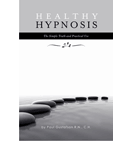Yes, research demonstrates a significant effect when using hypnosis for weight loss. In a 9-week study of two weight management groups (one using hypnosis and one not using hypnosis), the hypnosis group continued to get results in the two-year follow-up, while the non-hypnosis group showed no further results (Journal of Clinical Psychology, 1985).
In a study of 60 women separated into hypnosis versus non-hypnosis groups, the groups using hypnosis lost an average of 17 pounds, while the non-hypnosis group lost an average of only .5 pounds (Journal of Consulting and Clinical Psychology, 1986).
In a meta-analysis, comparing the results of adding hypnosis to weight loss treatment across multiple studies showed that adding hypnosis increased weight loss by an average of 97% during treatment, and even more importantly increased the effectiveness POST TREATMENT by over 146%. This shows that hypnosis works even better over time (Journal of Consulting and Clinical Psychology, 1996)
In one study an average savings of $1,200 per patient resulted from this simple 5-minute intervention of hypnosis before surgery. (Western Journal of Medicine. 1993) Those who are mentally prepared for surgery consistently have fewer complications, require fewer medications, and heal more quickly.
The reason pre-surgical hypnosis is so effective is because it offers direct access to our most powerful level of thought, the subconscious mind. This enables individuals to powerfully fine tune and prepare body and mind for surgery.
Paul Gustafson, R.N., C.H. has been featured on WBZ radio, hosts TV show Healthy Hypnosis, is an Angie’s List ‘Super Service’ provider. Check out his in-office Surgical Success hypnosis program. Also available as MP3 download.
Contact: 888-290-3972 or info@burlingtonhypnosis.com and visit Burlington Hypnosis.
Regression hypnosis is one of the most fascinating applications because it is the gateway to profound clarity of prior times in our current lives, and can also productively detail times events of past lives, depending on the values of the client. The primary clinical benefit of regression hypnosis is to assist individuals to go back in time, to resolve the point of origin of the problem.
For example, a client presented with unrelenting leg pain which did not respond to medical treatment. During a regression session, he journeyed to a prior life where he suffered traumatic injury requiring amputation of the leg. The reason he likely carried the pain today was that he never learned the lesson the event was intended to teach him in the first place.
During a regression session it is helpful to explore the events of that day, what surrounded the incident emotionally, to help the client understand what transpired. Then, with a better sense of the past, I helped the client encapsulate the past moment from his current life. It can be as simple as cutting an imaginary cord, snapping the client forward into a life free of the burden of the past.
Throughout our current and past lives we can get stuck in emotional potholes. Hypnosis is an extremely productive tool enabling an individual to learn what needs releasing or repairing. Clients suffering for decades can walk out of the office after one regression session feeling completely free. A recent example of the mainstreaming of hypnosis came in May of 2008. Oprah Winfrey did a whole program on regression hypnosis with renowned hypnotist Brian Weiss, M.D.
For those not comfortable with the concept of regression hypnosis it is helpful to know that there are many techniques which offer similar freedom from the unproductive past that can be accomplished in the here and now.
By: Paul Gustafson RN CH
Tania Lapointe is the happy mother of three young children. But when she recalls giving birth to her two boys, 5-year-old Guille and 2-year-old Philip, she is not exactly overcome by a warm, maternal glow of remembrance.
“I was in extreme pain — the kind of pain where I was almost convulsing, screaming ‘give me drugs, give me drugs,'” Lapointe said. For her baby Chole, born one month ago, Lapointe was determined it was going to be different, and it was. During labor, without any medication at all, she was calm, quiet, and peaceful, surrounded by her husband, her mid-wife and Maureen Saba, the woman who taught her how to perform self-hypnosis.
Saba, a hypno-birthing practitioner, has taught Lapointe and dozens of other women how to be self-hypnotized during birthing. The women use positive images and relaxation exercises to ease the pain of childbirth, and for many, the results have been outstanding, advocates say.
Summoning Serenity During Labor
“They are so focused, they are in such control. It’s incredible,” Saba said. Though self-hypnosis is not a new idea, it is a rising trend in natural childbirth. Many people think a hypnotist as someone waving a pocket watch in front of a person’s eyes to make them do things they would not normally do. But when it comes to clinical applications, hypnosis is nothing like what you may have seen on stage, or in movies.
Women are encouraged to think of birth pains as surges or pressure rather than “contractions.” They are asked to picture themselves in a serene location, such as the beach. The hypno-birthing practitioner encourages them to feel waves of relaxation moving through their body.
Some 1,000 instructors are certified through the HypnoBirthing Institute, based in Epsom, N.H. — and the demand for the instructors certainly exists. Lapointe cannot imagine giving birth without one.
“This was like heaven compared to the other two,” Lapointe said. Pregnant mothers or patients who choose to learn self-hypnosis as a way to ease pain during pregnancy or surgical procedures use a combination of techniques to achieve a state of hypnosis. “Some of the basics are learning how to breathe properly how to let the muscles completely relax,” Saba said. “It really must be practiced at home, self-hypnosis gets better with practice,” she said.
Saba has her students attend five classes of self-hypnosis instruction. When they’re done with the classes, they continue to practice at home using tapes and the techniques they learned in class.
Breezing Through Kidney Operation
Hypnosis is not just for the labor room. Robert Scott used hypnosis when he had his second kidney removed at Boston’s Beth Israel Deaconess Medical Center.
His doctor, Elivira Lang, says hypnosis reduces the need for pain medication, which often leaves the patient confused and weakened. It worked for Scott, who said that with just a tiny bit of medication and hypnosis, his second kidney removal was a breeze compared to the last.
“This one I’m much more alert afterwards, much more awake,” Scott said. His experience is not unusual. Dr. Lang has published the results of a study with 241 patients who have undergone hypnosis while having radiological procedures. “We found three things: the procedures are more comfortable, safer and faster,” Lang said. ” I think it’s just a state of focused concentration like you’re watching TV, you’re reading a book.” Doctors in other disciplines also believe in the power of focused concentration.
Taking Sting Out of Burns
Toronto dentist Dr. Victor Rausch uses hypnosis in his practice, and when had his own molar extracted by a colleague, he hypnotized himself, and used no anesthesia. Clinicians have also used hypnosis to help patients through one of the most painful procedures in all of medicine — removing the bandages from a burn victim.
David Patterson, a professor of rehabilitation medicine at the University of Washington, used hypnosis to help electrical technician Ladd Richter, who suffered burns over 20 percent of his body after an electrical explosion. The process helped Richter through the twice-a-day ordeal of treating his wounds, and he felt energized when the hypnosis was done.
“I feel like a million bucks,” Richter said. “When you get up, you feel like you just slept. Like you had a good power nap. Full of energy.” And whether it’s a devastating experience like burns, or a joyous experience like giving birth, the benefits of hypnosis continue into recovery. “The huge difference was my recovery,” Lapointe said. “I was alert after the birth … and this time I was on my feet, right after the birth I was on my feet.”
Courtesy of ABC News
Think of hypnosis as meditation with intention. The word meditation comes from two Latin words: meditari, which means to exercise the mind or to think or dwell upon, and mederi, which means to heal. Meditation is the process of focusing within, becoming free of outer thoughts, creating a serene moment of inner stillness. Routine meditative/hypnosis practice establishes a lasting peaceful afterglow which positively enhances the overall quality of life.
We all carry around repressed issues and emotions of our day-to-day lives. Over time, this accumulation leads to chronic emotional and physical problems which we either do nothing about, or like so many, pursue relief in the form of drugs, food or alcohol.
One of the first questions I ask clients is if they have ever practiced any form of meditation or relaxation techniques. If they have, I explain the similarity between what they already know and hypnosis, which helps them more easily jump into the flow of hypnosis.
Clients often express frustration with meditation because they either weren’t given an adequate explanation of how to do it, or weren’t able to achieve the level of peacefulness they desired. Through the course of our work together, clients learn how to do self-hypnosis, which helps them become more proficient with their own meditative process.
My goal is for all of my clients to become self-practitioners. By learning how to independently create the feel-good comfort of hypnosis, they enhance the effectiveness of the formal sessions, which results in more lasting success. We are all hardwired with the ability to focus within. With a little instruction and practice this thoughtful journey can be a life changing experience. (more)
By: Paul Gustafson RN CH








